It is an absolute nightmare trying to get anywhere in Staten Island without a car. There’s only one train line that runs down the direct center of the island, and the busses are unreliable at best, especially on the weekends. I took the ferry to the tip of the island and then took the SIR in a couple of stops and then walked for a half-hour through a part of town that everyone living in it was clearly desperate to get out of.
All that said, Fort Wadsworth Park was absolutely lovely.
The location of Fort Wadsworth has been in use for military purposes since at least 1655, when it was used as a blockhouse by Dutch colonists. When the land passed to the hands of the British, it was used by them as a military outpost known as Flagstaff Fort and maintained control of it until the very end of the Revolutionary War in 1783. The site was maintained and continued to grow through the war of 1812 and the Civil War, and was armed for both World Wars though it mostly acted as a mobilization and deployment center. Though still owned by the United States Navy, with members of the Coast Guard living and stationed on-site, most of the structures at Fort Wadsworth have fallen into diserpair and it is primarily used as a public park under the purview of the National Park Service.
Having learned my mistake from Fort Totten, I made my way immediately to the Vistor Center upon my arrival. There were some rangers chatting with an older couple who were evidently regulars, and one of the rangers helpfully gave me a map and pointed me towards the exhibition hall.
The exhibition hall was a large gray room separated into two halves with several displays explaining various aspects of Fort Wadsworth’s history. It wasn’t the most welcoming space, but it was clean and well-made in a military-grade sense.
One display that caught my eye explained that this was at one time going to be the first museum dedicated to Indigenous Americans— the “National American Indian Memorial”, which began fundraising in 1909. Though a groundbreaking ceremony was held, which featured the unveiling of the first buffalo nickel, the memorial never came to be— possibly because it was all a scam by Rodman Wanamaker, the main driving force behind it.
Some of the displays were a little more…. pedestrian, such as this one of clearly labelled “FAKE EGGS” to illustrate a training exercise that the special forces did in the 1960s.
Easily the coolest thing on display was this Real Cannon, with two not-real men hanging off the side of it which did give me a bit of a jump scare walking into this dark room and seeing those two figures. Very sick cannon though.
The map that the ranger gave me had a suggested walking path that was about a mile long that one could take in order to see all of the historical sites in Fort Wadsworth Park. I set off and soon came upon one of the most beautiful vistas I have ever seen while living in New York— the skyline of Manhattan fully dominated by the sky above it and the sea below it, with the Verrazano-Narrows Bridge just off to my left.
It turned out to be the perfect place to stop and eat a sandwich.
I was not the only one with this idea; a whole bunch of presumably Staten Island families had brought their kids out for the afternoon and they were all running around and hollering and trying to look at Manhattan through an absolutely busted set of tower viewer binoculars(those ones that are permanently mounted on a pole in touristy harbors and peaks and the like).
The sign above explained that the Verrazano-Narrows Bridge was commissioned by the state of New York in 1946 as an easy transportation route from Brooklyn to Staten Island, and was completed in 1964 and represented the beginning of Staten Island’s change from a rural to urban environment.
It was also a great vantage point to see from above the most imposing structure of Fort Wadsworth— Battery Weed, which was constructed during the civil war. Each of the archways held a cannon, for a total of 116. It was rendered obsolete before the end of the war by bigger and more precise artillery which enemy ships could potentially employ, and quickly fell into disrepair.
I continued to walk along the path that the park ranger had indicated for me, passing this cannon which seems set and ready to deter any villains entering Staten Island by bridge.
The military structures of yesteryear still contain hard-hitting political messages of today.
I passed the Torpedo Building, which once housed what we would think of today as mines. A small railway structure running into and out of the building would allow small rail cars of mines to be quickly transported to the shore in the event of an emergency.
And the trail wound me down to the lower level, where I was now close-up with Battery Weed, which I had seen before from above. They were not allowing entrance at this time but it was a magnificent stone structure nonetheless.
I surprised myself by having an excellent time at Fort Wadsworth Park. I had not enjoyed getting there, and I had not enjoyed the previous military fort I had visited, so I was preparing myself for a real bummer of a day but I was so totally overtaken by that beautiful view and how nice it was to be outside with all these families and their kids running around on a lovely day in June.
ADMISSION: Free
GIFT SHOP: No
BATHROOM: Yes
WHEELCHAIR ACCESSIBLE: Yes
June 8: Fotografiska
June 15: Fraunces Tavern
June 22: Garibaldi Meucci Museum
June 29: General Grant National Memorial

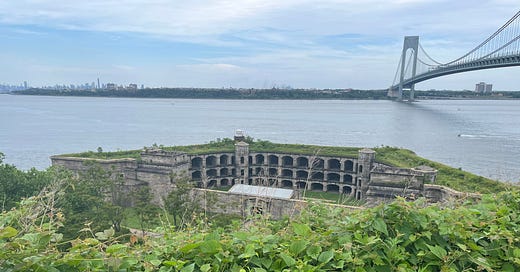


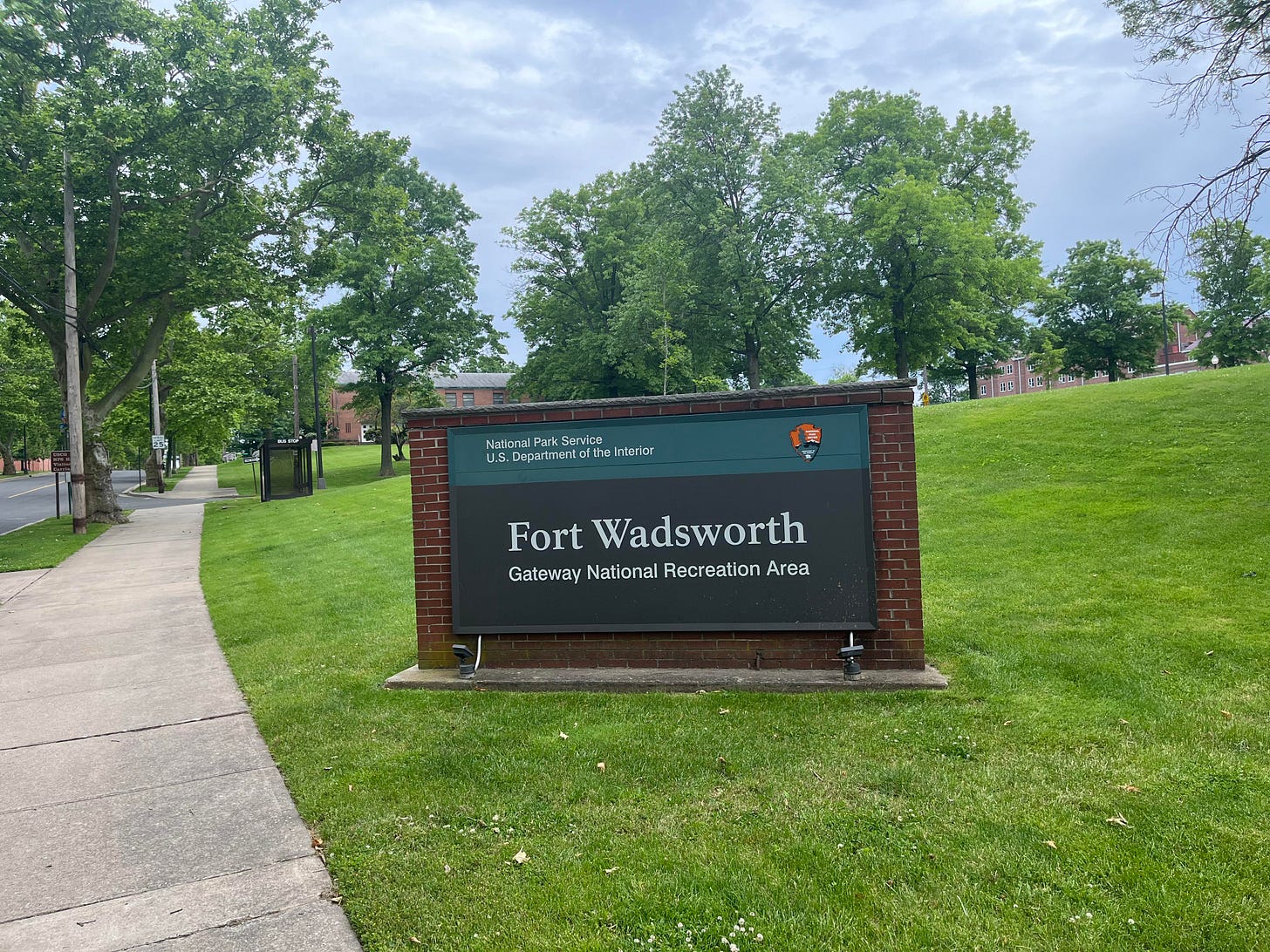
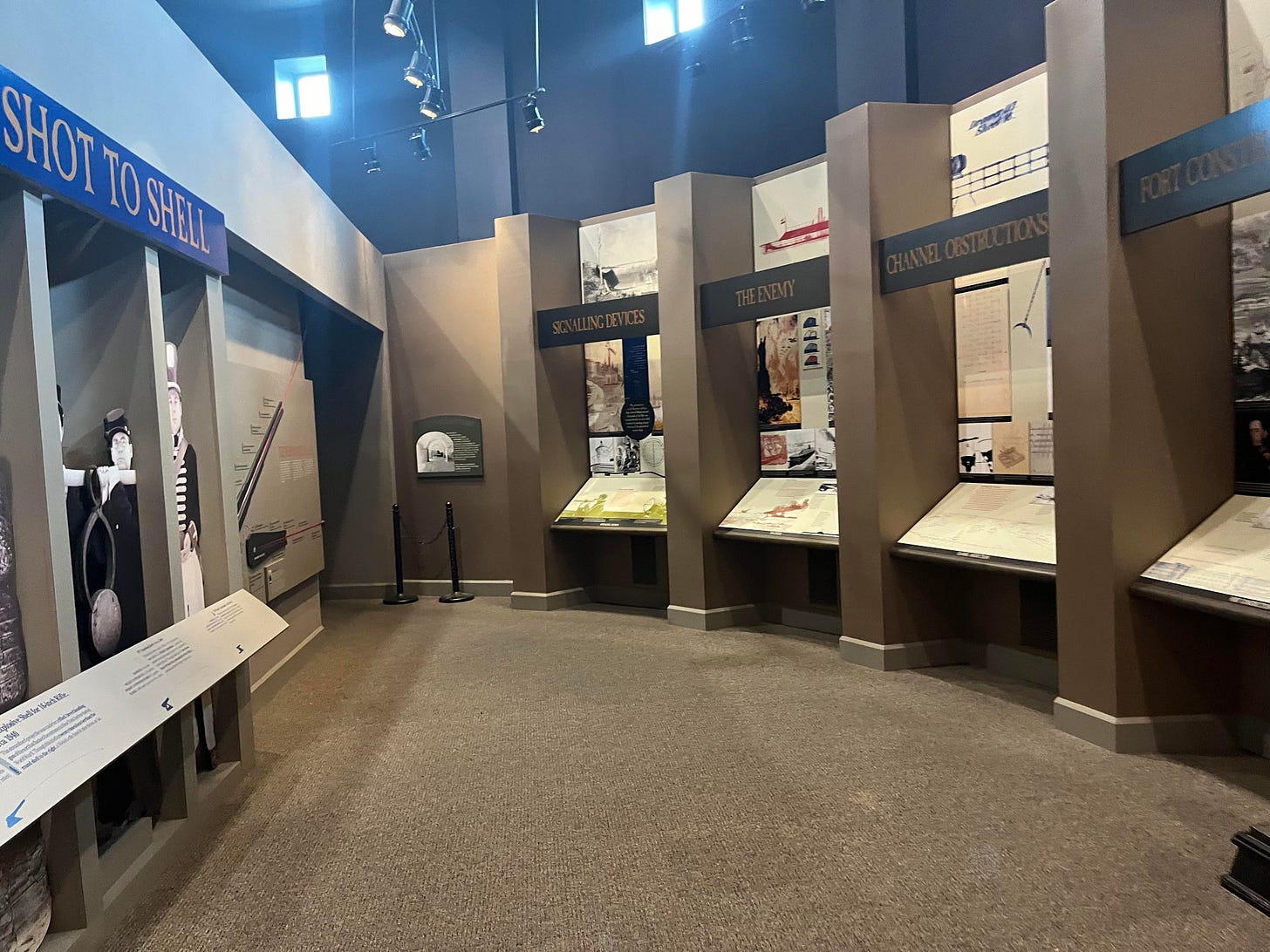
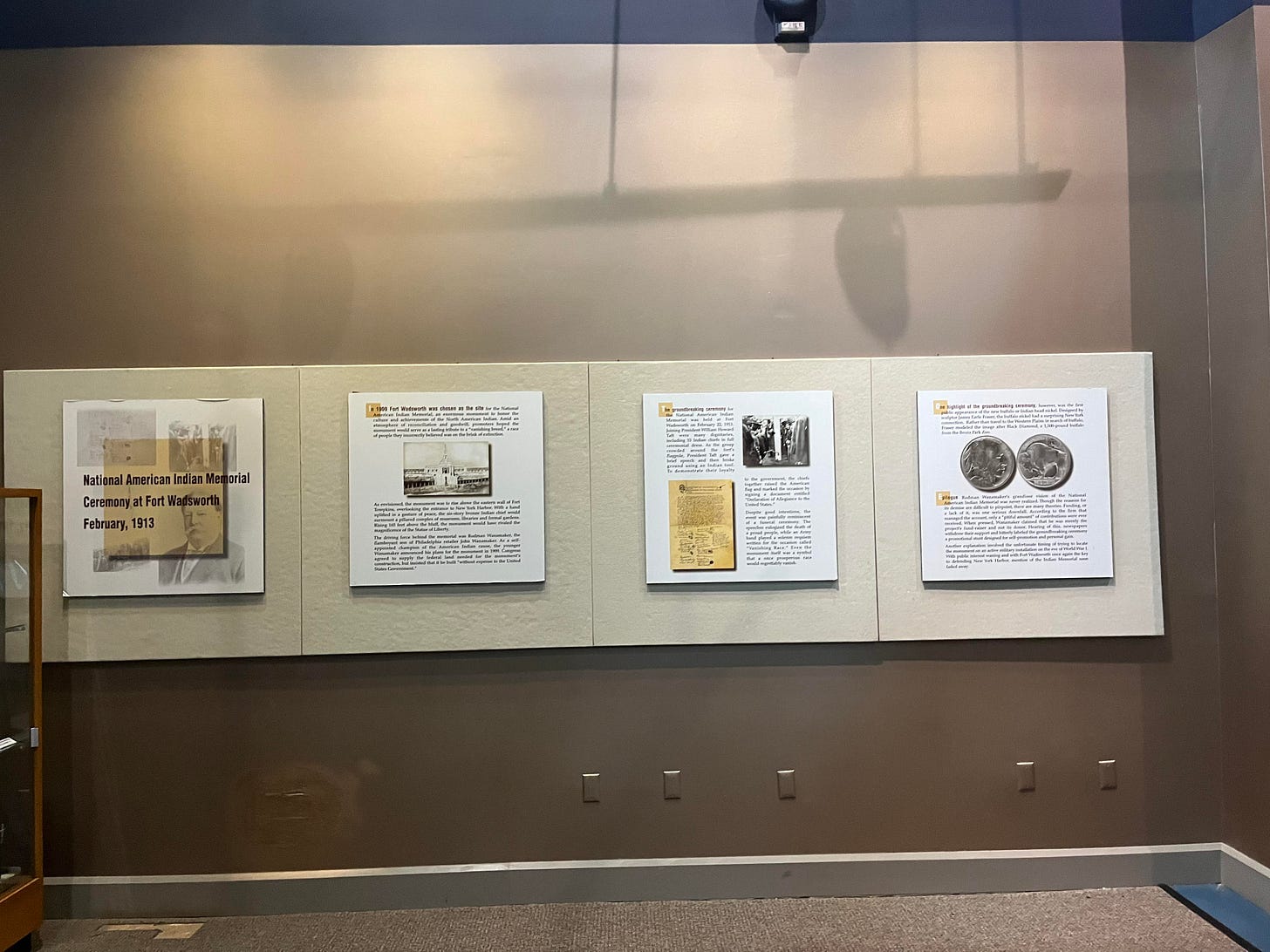
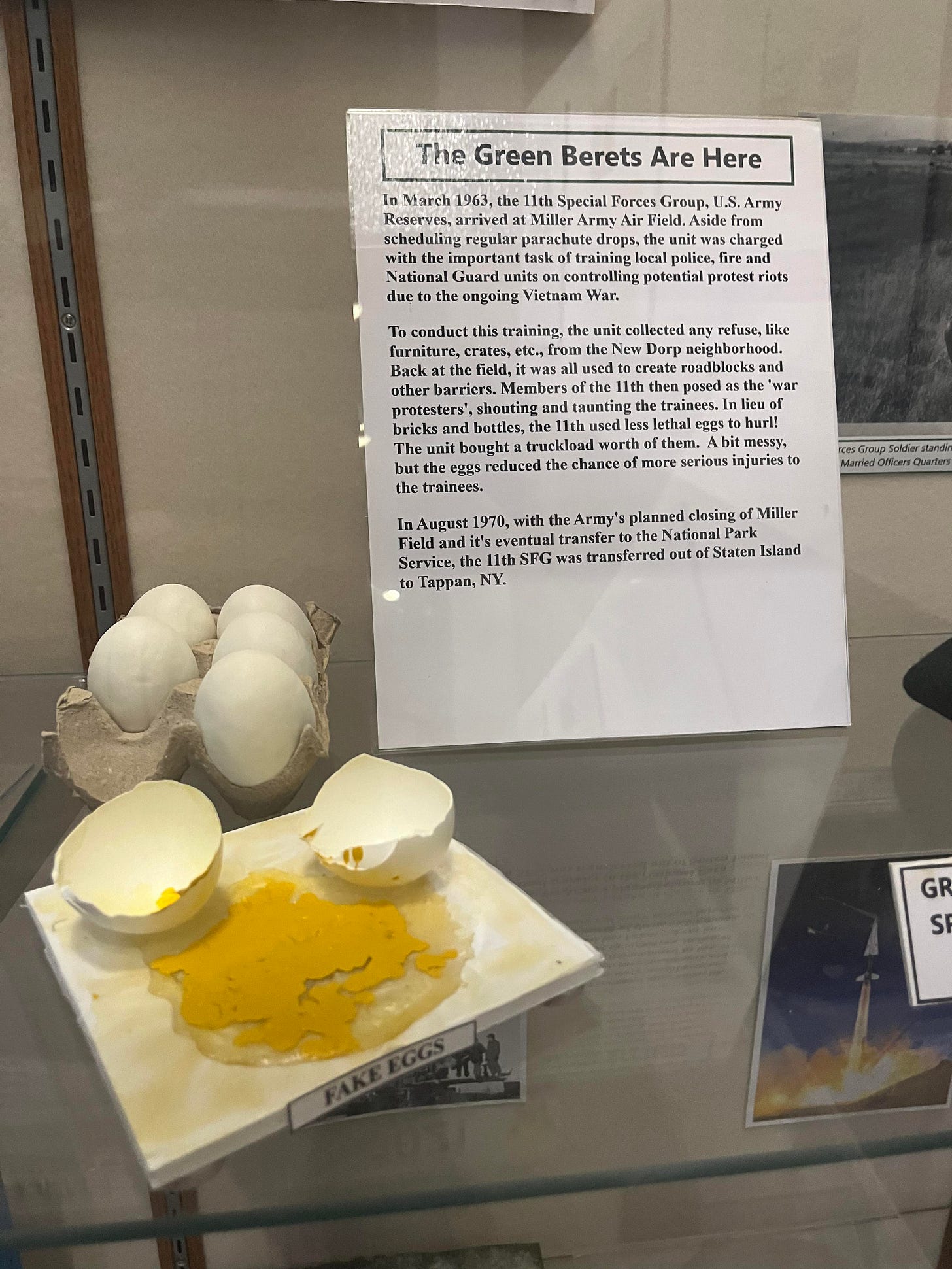
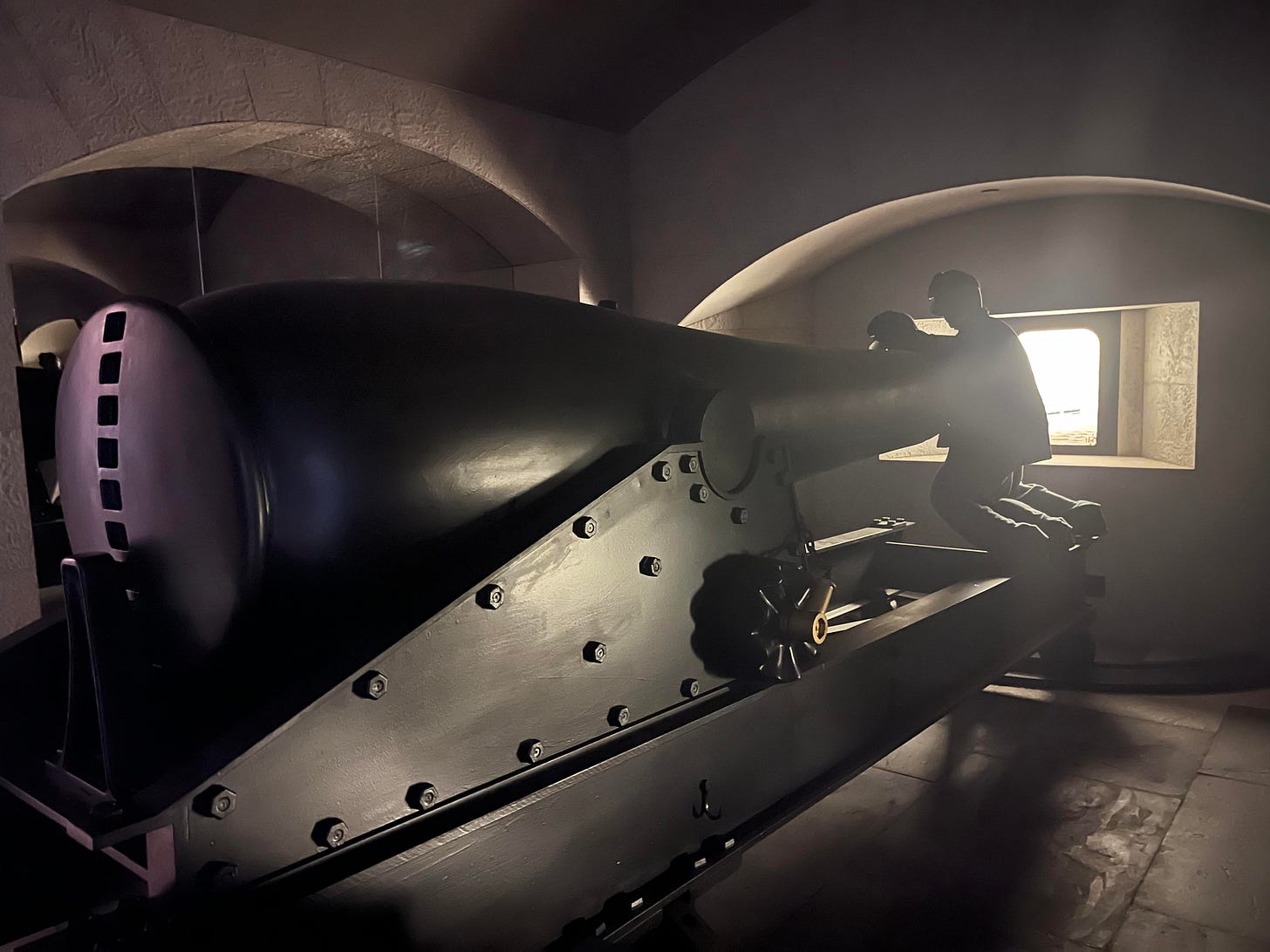
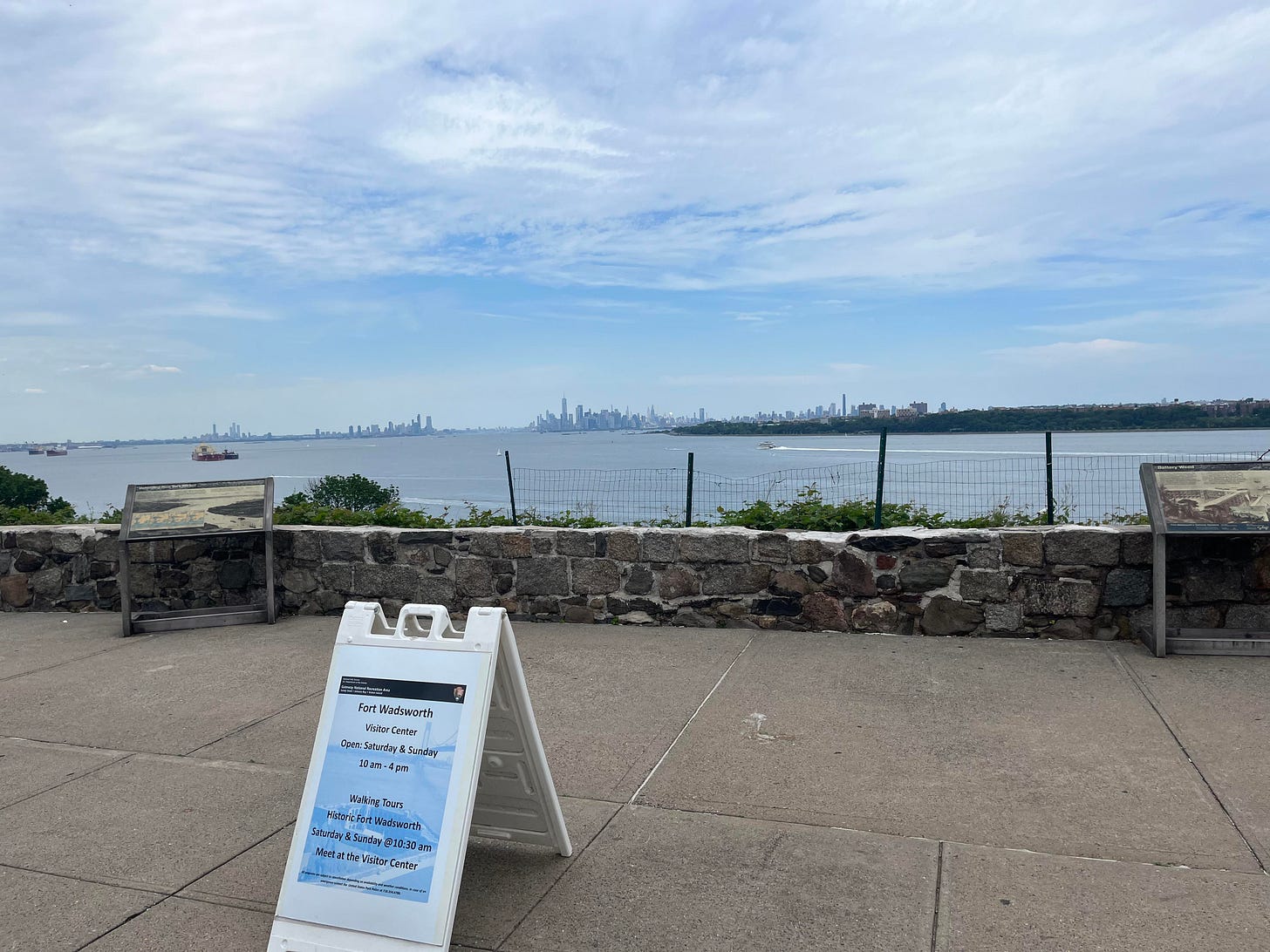
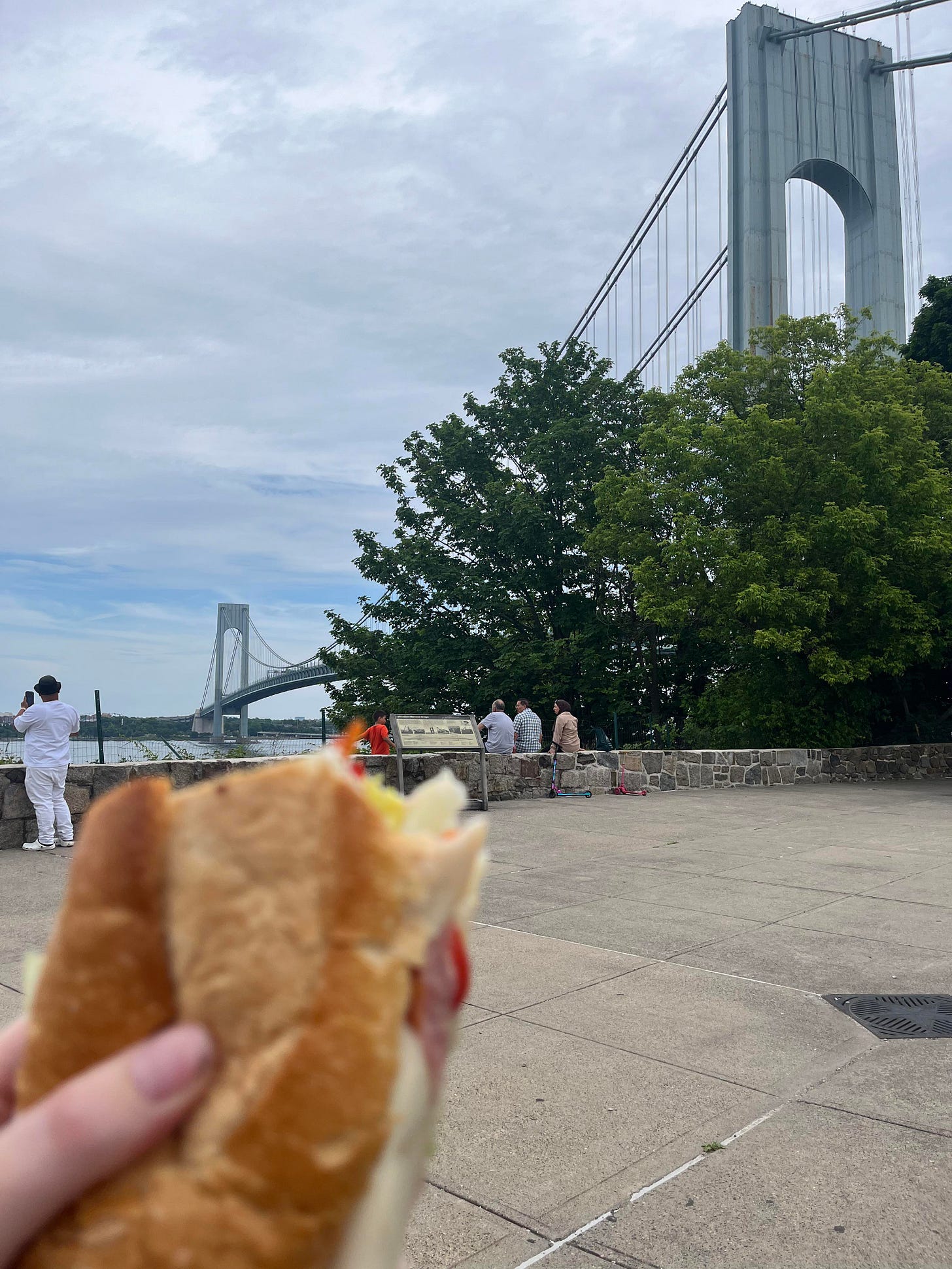
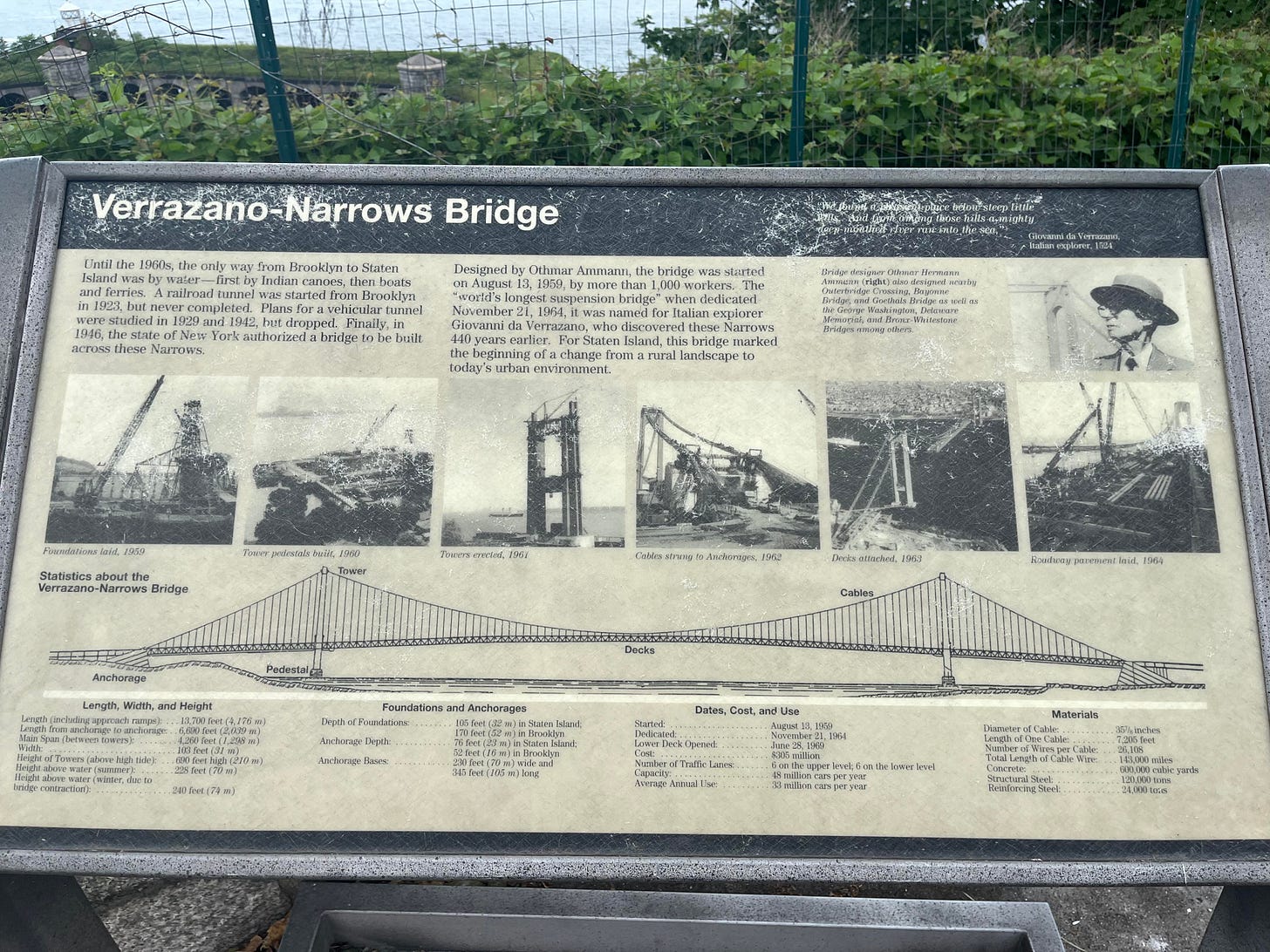

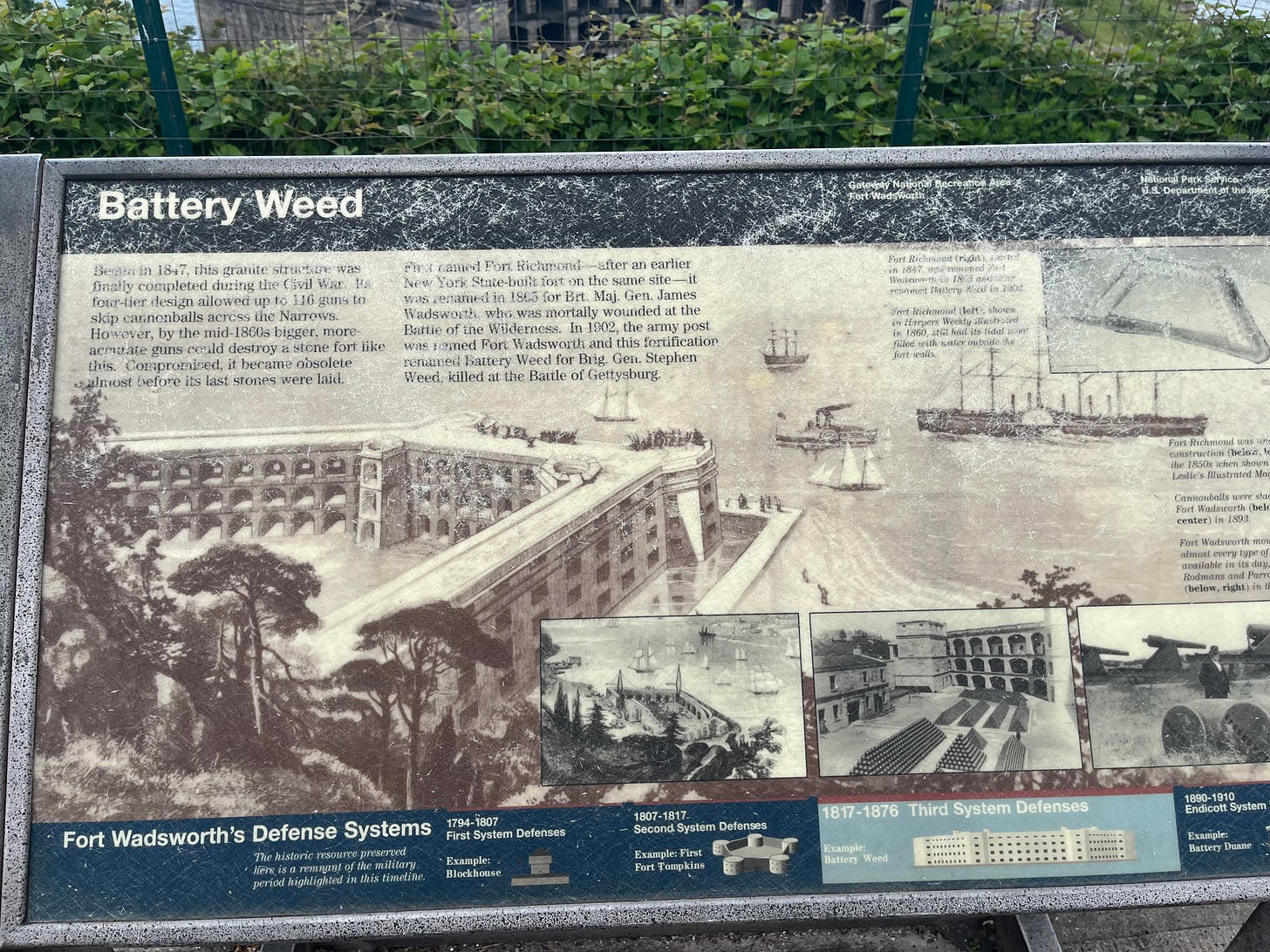
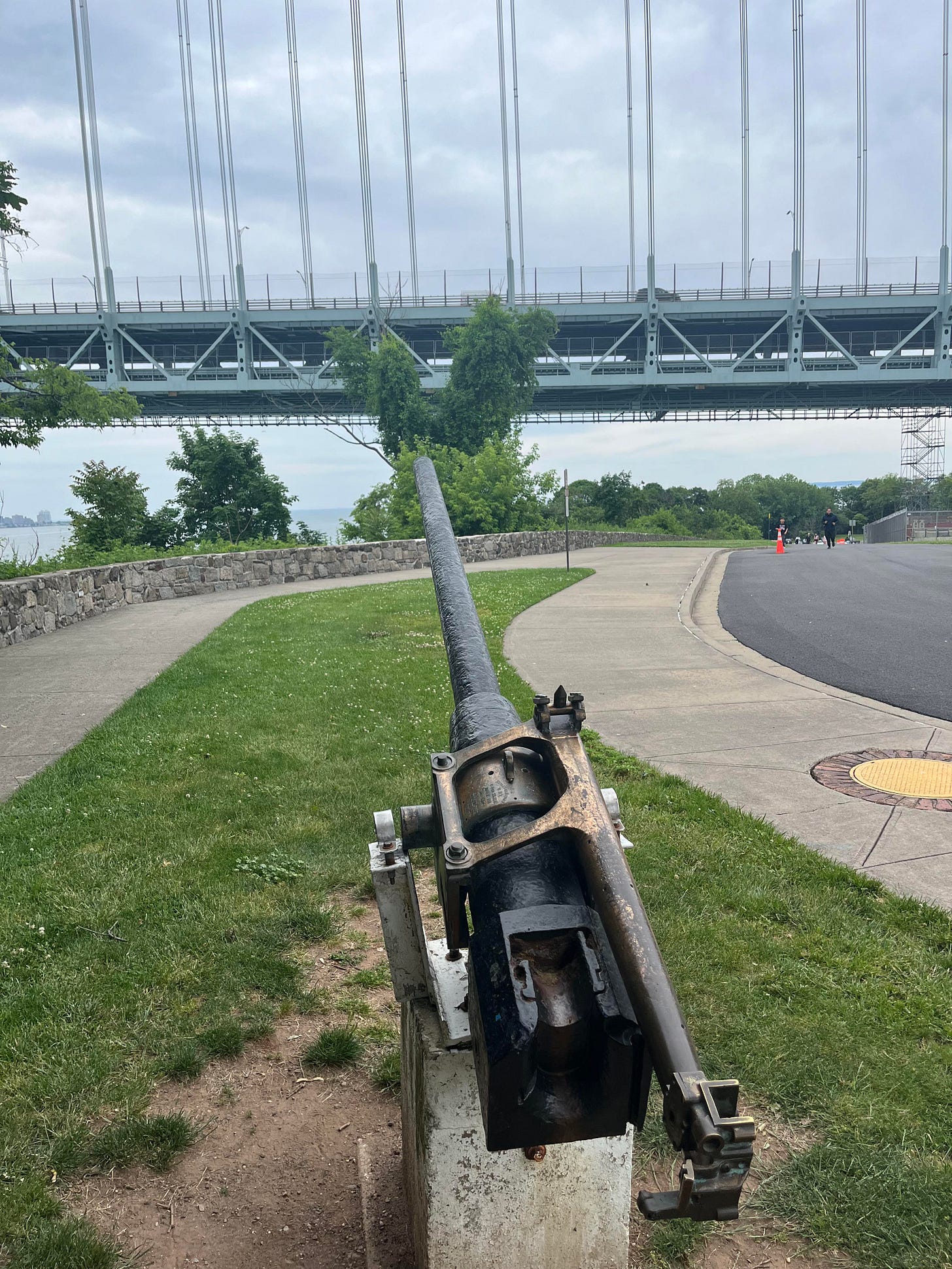
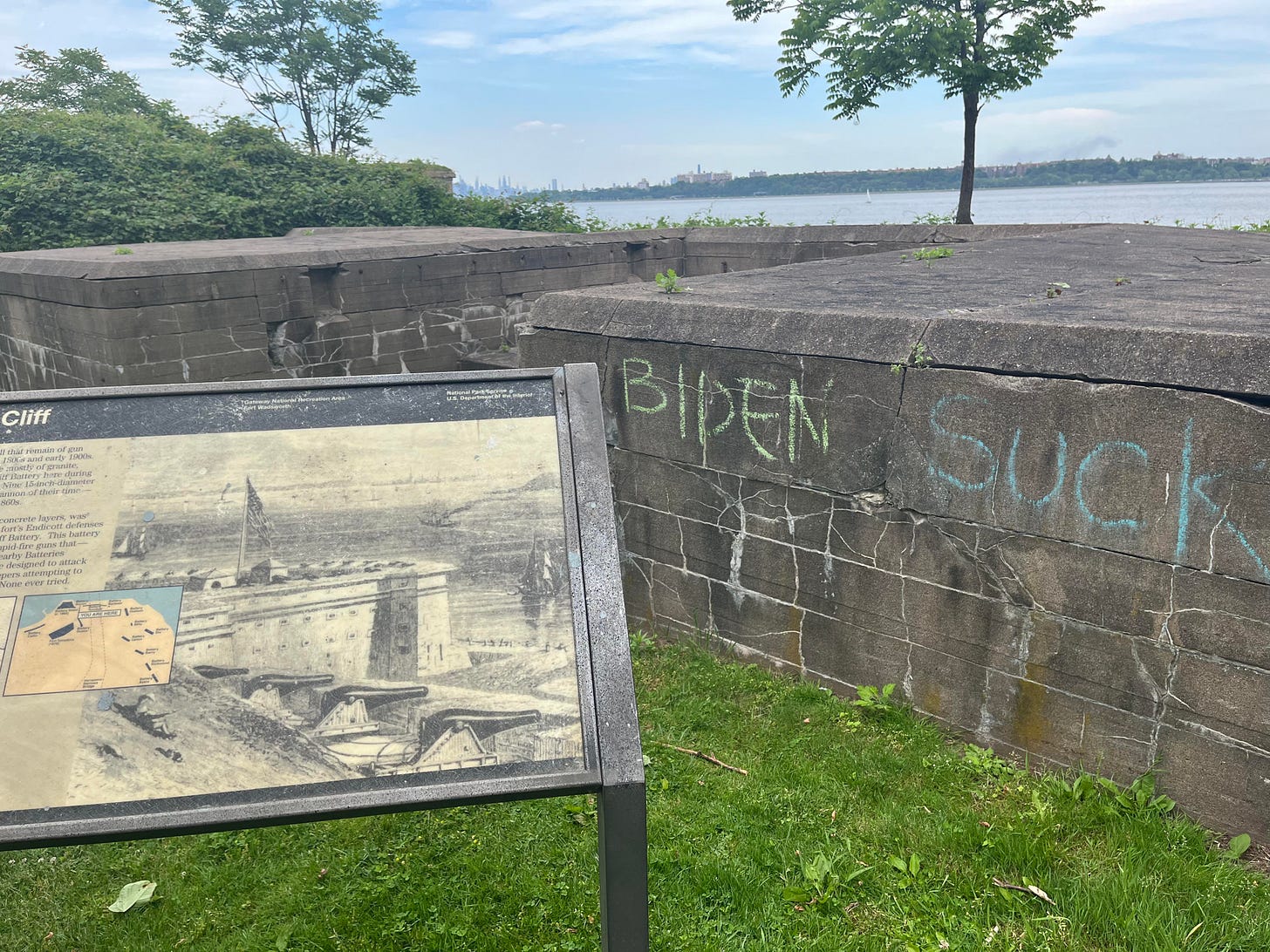
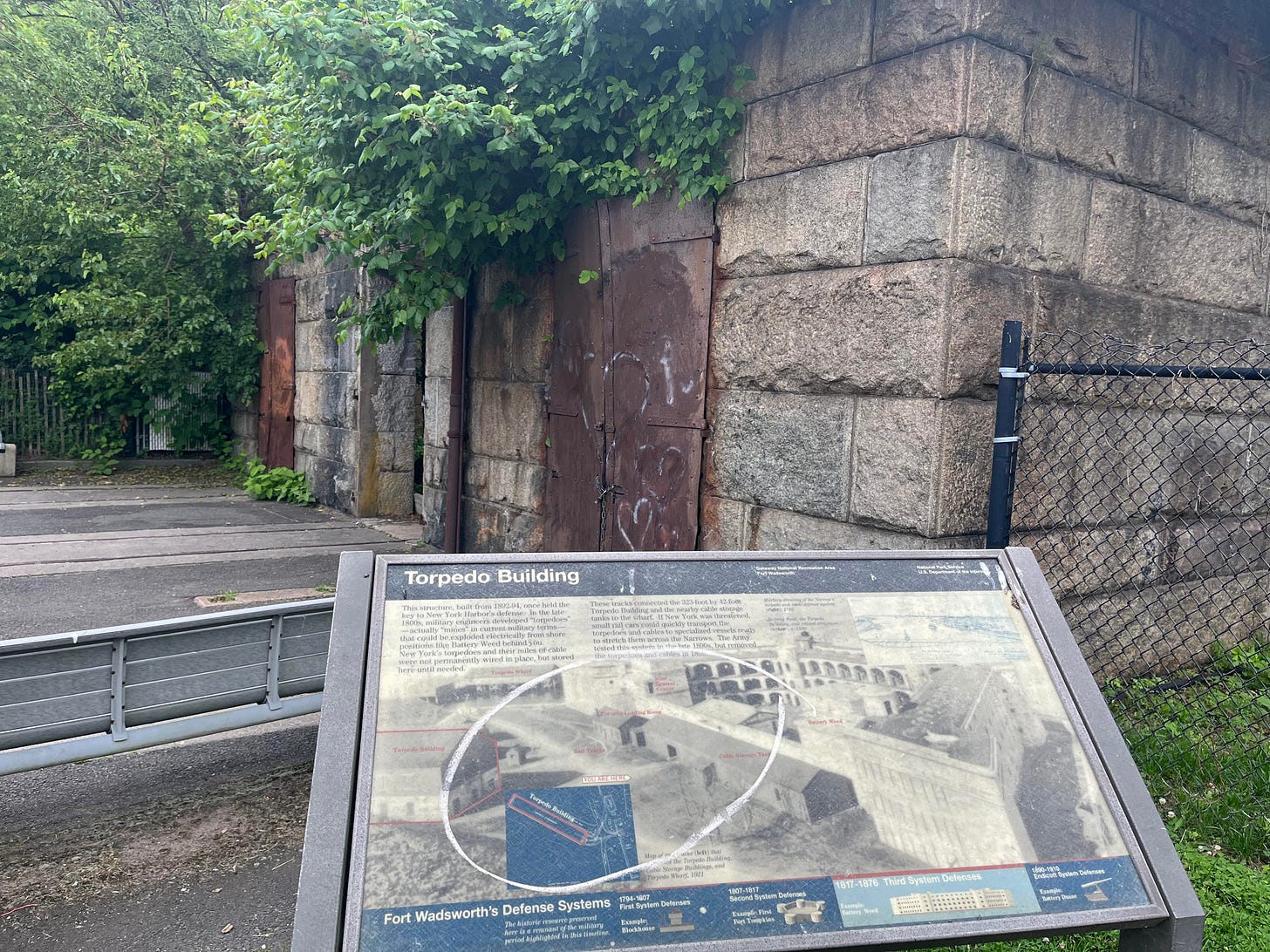
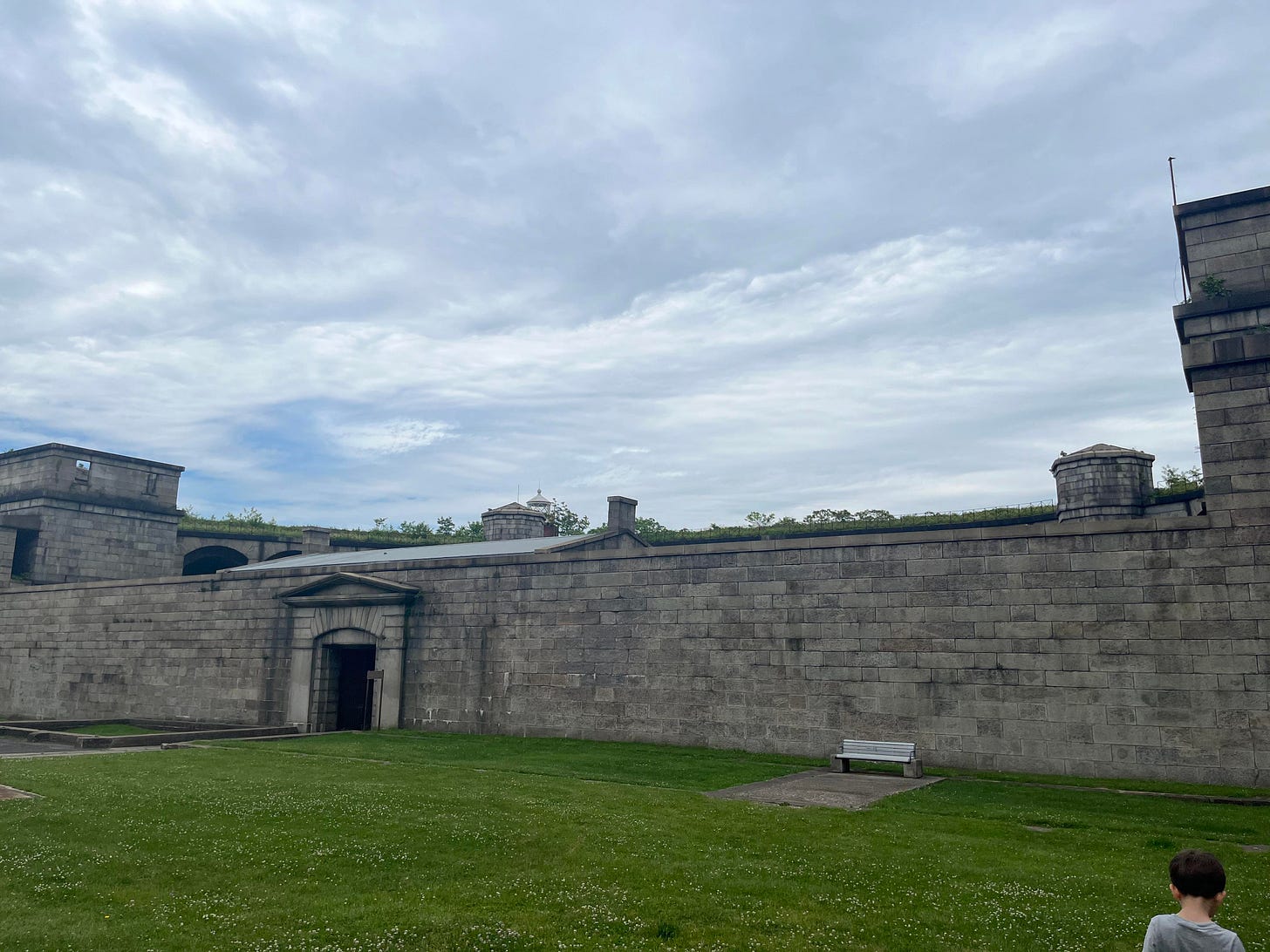
Jump scare! Your tour of museums is also an interesting tour of the workings of not workings of the nyc public transit system. Time for you to run for mayor